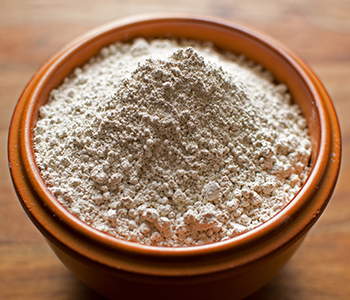Did you know that most toxins found in dog and cat flea treatments are the same insecticides used for lawn care and commercial agriculture? What’s more, many of these chemicals are linked to serious diseases such as cancer.
So what are the best flea and tick treatments for your pet? Read on to find out…
Warnings Against Chemicals in Commercial Pet Flea and Tick Treatments

The most important fact to know as a pet owner is that the same basic chemicals used in agriculture are also in many flea and tick pet products.
Here are just a few of the chemical toxins to watch out for:
#1: Imidacloprid. Over 400 household products contain this insecticide, including many pet flea and tick treatments. The U.S. EPA maintains that there is no connection between Imidacloprid and cancer.
However, the Natural Resources Defense Council recently recommended that the EPA review its stance since Imidacloprid has been linked to some cancers.1 The National Pesticide Information Center also points out a connection between exposure to Imidacloprid and reproductive issues in rats.2
#2: Fipronil. Fipronil is an insecticide and a parasiticide that is used to kill adult fleas and larvae, ticks, and chewing lice. It is the main ingredient for many topical pet products, including Frontline®.
A meta-analysis conducted by the Australian Pesticides and Veterinary Medicines Authority found “several areas of concern in the use of fipronil-containing products,”3 including risk of alopecia, pruritus and heart erythema as well as dermatitis in some animals (in response to topical use). They also caution against using fipronil on very small animals like guinea pigs and rabbits.
Interestingly, the Australian study did not mention cats, but prudence may dictate to be wary of fipronil for smaller cats. Research has also discovered that long-term use caused thyroid dysregulation as well as thyroid tumors in both female and male rats. Fipronil is classified as a “possible human carcinogen” by the EPA.4
#3: Piperonyl Butoxide (PBO). PBO might not be listed as one of the ingredients in your pet’s commercial flea and tick repellent, but more than likely it is in there somewhere. PBO is used in conjunction with over 700 different insecticides to enhance their effectiveness.
A recent study conducted by Duke University5 found that PBO can break down the biological signaling crucial for neurological developments in fetuses. Spectra Shield Medallions™ and Ovitrol Plus™ are just two of the brands that contain PBO.
Of course, these are just three of the MANY insecticidal chemicals used in pet flea and tick products. Others include permethrin, methoprene, pyriproxyfen, and other categories of aryl heterocycles. Each contain their own risk factors for both humans and pets, so be sure to do your homework before you buy.
In response to massive adverse reaction complaints, the EPA issued an order in 2009 that commercial flea and tick companies list ingredients on their products. This is a step in the right direction, but the requirement still does not prevent manufacturers from using these harmful or untested substances.6 Be wary of any chemical ingredients, especially if they contain a risk of cancer for you and your pet.
5 Effective Natural Flea Treatments
In human health, natural substances work with the body’s system to upgrade good things, like immune function and gut balance, and downgrade bad things, like pathogens in the bloodstream. You can use the same principal when structuring the best way to get rid of external pests (which can be thought of as pathogens living in your carpet and on your pet’s skin!)
The following natural substances work with the life cycle of fleas and ticks themselves. If used regularly, they can stop reproductive cycles in their tracks without harming you and your family, including four-legged family members.
#1: Cleaning
“Clean, clean, clean” is what all experts advise when it comes to proactive actions you can undertake for naturally keeping fleas under control all year round. This is because flea reproductive cycles could last anywhere from two weeks to several months. Cleaning up areas where fleas hide and lay eggs means you are getting at them before they repopulate. Weekly or even daily vacuuming carpets and couch cushions, cleaning all pet bedding on a regular basis, washing and fine-tooth combing your pet and sprinkling natural substances on selected carpeted areas (see below) are all easy actions you can take right now. Remember that female fleas can lay up to 50 eggs per day!
#2: Diatomaceous Earth and Fleas

Although DE is safe for animals and humans, it should not be inhaled, so be sure to wear a mask when applying it to carpet. Also make sure that none of your furry friends (and other little ones) are around when you do it.
Let the DE sit for several hours and then vacuum it up thoroughly. In addition, DE can be a great “dry bath” substance for kitties who are especially leery of water. Just be sure to keep it away from his or her face and use it sparingly.7
#3: Nematodes
It is also important to keep pests at bay in the areas directly outside your home – and you do not need to use harsh chemicals to do it. Nematodes are microorganisms that love to feed on flea larvae. Not so appetizing, we know, but it is a very good thing for preventing baby fleas from entering your home.
Simply mix nematodes into your soil or spray them on your lawn and outside areas. They are harmful to fleas and their offspring but not to outside animals, humans, or pets.8
#4: Essential Oils for Dogs
Cats are often very sensitive to essential oils. For dogs, however, there are dozens of options. Lemon, rosemary, peppermint, eucalyptus, tea tree, and citronella are some to experiment with. You can add a few drops to water for a bedding or body spritz.
Mixing with all-natural glycerin is great for a shampoo, and mixing with a neutral oil like jojoba can be ideal for a rub in key spots on the body. Be sure to use just a little bit on you or in a diffuser at first to “test out” how your dog responds to certain scents. Just like humans, dogs will have their preferences – and will be even more vocal about them since their sense of smell is so acute!
#5: Vinegar
Finally, sometimes a little bit of apple cider or white vinegar is just the ticket for spritzing bedding, carpets, and fur. Simply mix equal parts vinegar and water and pour into a sprayer.9 Fleas do not like the smell of it and will stay away from anything that has vinegar residue on it. Vinegar is mild enough for cats as well (if they will stay still for a spritz, that is).
We can all agree that fleas and ticks are unwelcome invaders in our homes. In the face of such annoying pests that could make you and your pet sick, it is easy to react. You don’t have to grab the first chemical solution you see on the shelf to make them go away.
Taking a few moments to know the risks of commercial products and to consider healthy options will help protect the health of your pet, as well as yourself and your family!
If you’re a pet lover, you may know that cancer rates for cats and dogs are nearly identical to ours. The great news is you can get practical real-life advice right now about what you can do to protect your pets. Click here to discover more.
Article Summary
The same chemicals used in flea and tick products are used in agriculture, and can be toxic to your pet.
Imidacloprid has been linked to some cancers, and Fipronil is classified as a possible human carcinogen by the EPA.
The EPA requires manufacturers to list the chemicals in these treatments, but does not prevent them from using harmful or untested chemicals.
5 All-Natural Treatments:
- Cleaning
- Diatomaceous Earth
- Nematodes
- Essential Oils
- Vinegar
Protect your pets by examining ingredients and considering natural alternatives to flea and tick prevention.




















I purchased the truth about cancer, I’m battling myv3 bout with melanoma, tried to open “the quest for the cure and it tells me it’s no longer available. Did I wait too long to read it?
Betty,
Please send our customer support team a message and they will get back to you about this issue as soon as possible! Here is a link to send them a message: https://support.thetruthaboutcancer.com/submit_ticket
My nephew was just diagnosed with a plasma cancer. Found when he snapped his forearm just getting out of a chair. Can I get any and all information about this
Grace,
The best advice we can give you is to consult with one of the doctors/experts that we interviewed in our Global Quest Series. Here is a link to get their information: https://thetruthaboutcancer.com/experts-info-sheet/
Hi Ty,
Please update this article since a person should only use “food-grade” Diatomaceous Earth. Otherwise, it can be harmful for people and pets to inhale. Some people rub it into their pet’s fur so pets injest it when they lick their fur. So “food-grade” only. Otherwise, good article. Thanks!
Hello, Jerilyn!
Thank you for being part of our community and your comments. Your feedback is important to us and we will pass it onward.
Have a blessed day.
Hi Ty. My dog was recently diagnosed with liver cancer – he deteriorated so much overnight after the diagnosis and couldn’t walk. An assessment with the vets resulted in him having to be put to sleep. It was such a shock as it all happened so quickly. I believe that tick treatments and vaccinations had a lot to do with it. He had a clean diet. rarely ate dry food and if he did it was the purest that we could buy. I miss my little buddy so much and I regularly ask the question, why did this happen to him when he was such a fit and healthy dog.
Thanks for all the work you are doing,
Geri
I”m so sorry Geri – my heart goes out to you……
Great article and lots of good stuff as treatment alternatives, but do you have any successful preventive treatments for the paralysis tick that we have in Australia?
Hello, Jan!
Thank you for the nice feedback and joining us from Australia!
The best advice we can give you is to reach out to one of the experts interviewed in our docu-series, The Truth About PET Cancer.
Here’s the link to The Truth About PET Cancer Expert List:
https://thetruthaboutpetcancer.com/our-experts/
Also, the American Holistic Veterinary Medical Association has a resource to search for holistic veterinarians here: https://www.ahvma.org/find-a-holistic-veterinarian/
Thank you! ☺️
I have heard from several sources that Melaleuca or tea tree oil should not be used on dogs. They are unable to metabolize it (in the liver). It can cause seizures particularly in smaller dogs.
Great series! This series has inspired me to really boost my immune system and I would very much like to include LifeOne as part of my life-style makeover! I am now +5years after radiation treatment for ocular melanoma and am simply being ” monitored” by my oncologist. Can I take LifeOne regularly along with my plant based diet or do I need to go through consultations etc with an approved clinic before using it?
I too have found little encouragement with mainstream medicine regarding diet so I too am ready to heal myself!
Thank you for your committment to spread the word about alternatives for cancer health care and prevention!
We use a drop of lavender oil on the pet’s collar in 2 to 3 places depending on the size of the pet. It repels the fleas, they don’t like the smell. Just don’t put it directly on your pet’s skin.
Also, beware of internal meds for fleas. Some medications of this type are causing seizures in pets.
Thank you so much for bringing up this topic. Flea preparations should simply not be used on pets. Cedar oil is great for yard treatments. There are a couple of companies out there but Cedarcide puts out a great product and the customer support is awesome. The price tends to scare people away but it is economical when used properly. Cedar kills flies and ticks. It stops the propagation of more fleas. We treat our yard regularly with it and it works and trust me we are experts lol we have a household of cats. Cats can be sprayed with the indoor preparation of cedarcide but they hate it and some are very sensitive to it. Wondercide brand has phenols in it and not the best brand to use on cats directly. Use can get the indoor solution to use around the home as well. Especially in bedding. But really the most effective control of fleas for our home has been flea traps. There are a couple of brands that are great. You just put them under beds and furniture or lay them in the corners of rooms. I use red bulbs so as to not be harmful to health, white bulbs keep you awake in a bedroom. Just change the sticky material pad regularly and you will see your fleas disappear like magic. Put them in your basement and it works wonders. Rosemary also keeps fleas away from house. Plant a few in key spots around perimeter of home. Rosemary in powder form can be put on their bedding or yours. It keeps fleas out. It just gets vacuumed up so replace it. Use neem oil in landscaped areas or on the outside of screened porch areas. Cedarcide also sells cedar chips for in garden areas near home. Do not put Neem oil on cats or their bedding. Just in places that fleas try and enter home. Use it as a spray. Mosquito Barrier is a brand of Garlic spray. It is a concentrate you mix with water or in a hose sprayer. It does not kills fleas but when uses on lawn, watch out, it keeps all mosquitoes tick and fleas away. Very economical also. No you do not smell garlic all the time. It dries and you smell nothing. Makes enjoying your yard possible again if you have a lot of flying insects. Use it just before a picnic or party too. We have tried everything out there and what I suggest does work. We use a combonation of all these methods. We also invested in the Cedarcide fogger for our basement and attic. Worth every penny. Please be careful when choosing the cedar oil. Use it from a good source.
Dear Ty and Charlene,
Thank you so much for your important advice and information. You may want to alert people to something every veterinary office pushes: Monthlly HeartguardPlus treatments. This is a horribly toxic comination of drugs and pesticides.
It is not just a heartworm preventative, but also includes de-worming (which some dogs never need after a regular fecal lab test shows no parasites), anti-tick, and other dangerous and unnecessary “treatments”. Vets also recommend this dangerous heartworm medication in areas where there are NO heartworm-carrying mosquitos whatsoever, but they try to convince people with a map of, for instance, the Los Angeles area where there are no heartworms, indicating many cases with little red dots. These are all cases of dogs brought in from other areas, such as Northern California. Anytime you leave a heartworm-free area, a week prior to leaving you should start the once-a-month heartworm medication only–NOT HeartguardPlus. This is information I verified with two top veterinarians, one an internal medicine specialist.
Wow, the FemHealth app has been a game-changer for me.